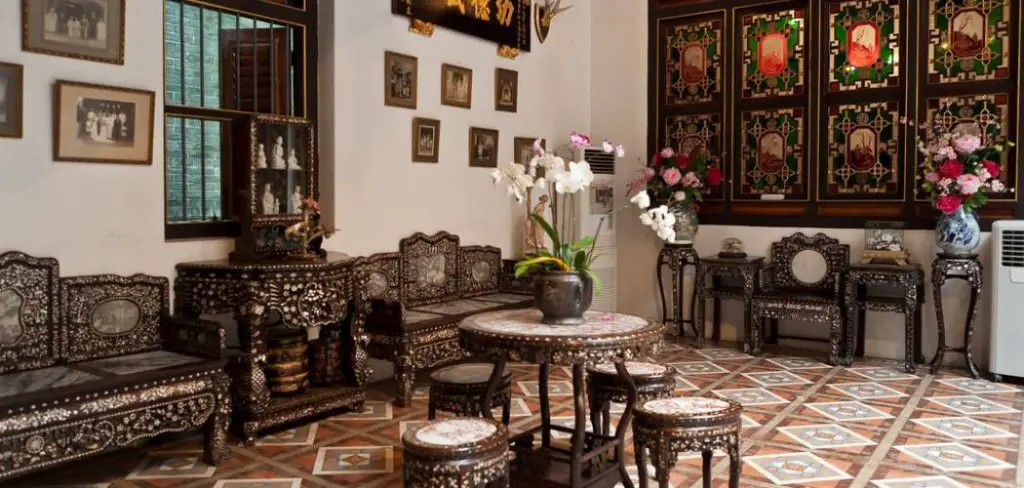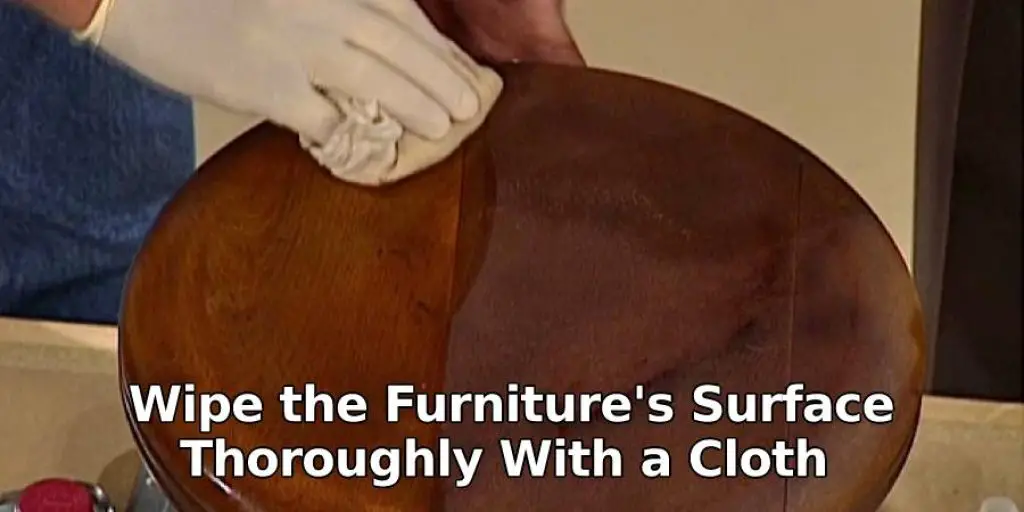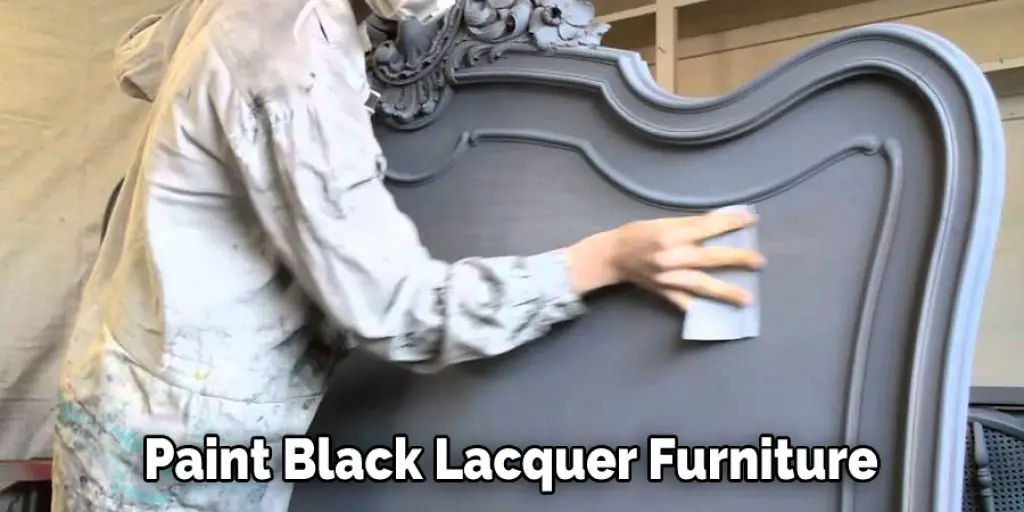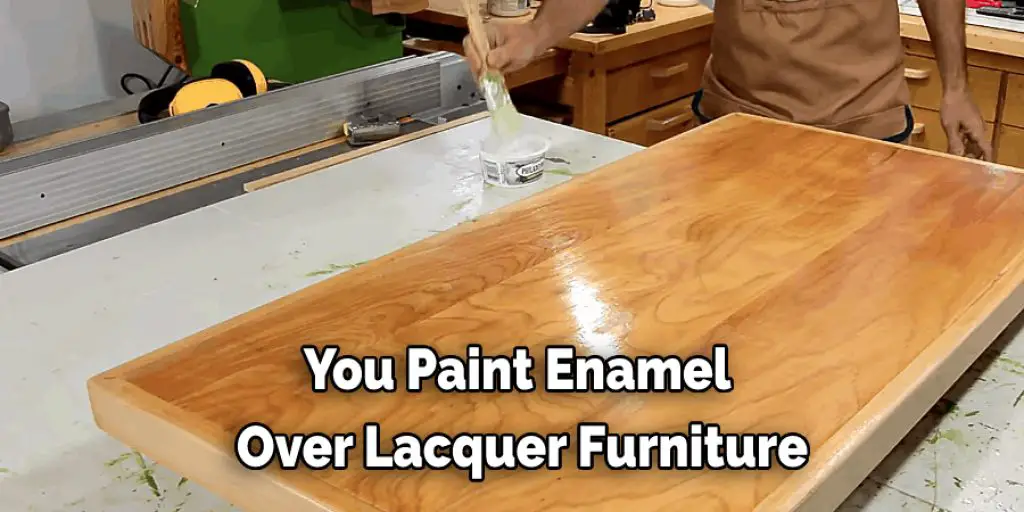Introduction
Black lacquer furniture is a type of wood-based furniture which has been taken care of by coating with black lacquer. This finish gives the furniture a stylish and luxurious look, but as is common knowledge, this look does not last forever.

To maintain or restore your black lacquer furniture, you must know why the finish becomes faded and how you can re-coat it successfully. In this article, I will discuss how to paint over black lacquer furniture. So let’s get started.
Why Lacquer Fades?
This finish tends to become dull and faded due to exposure to direct sunlight and humidity. As these elements wear out the protective coat of the lacquer, they also cause peeling off and cracking on your piece of furniture’s surface, which will undoubtedly come unappealing to sight after some time. Another reason for the lacquer finish to lose its luster is that the table may have already been chipped or dented. Even if your furniture doesn’t appear to be damaged, it has likely suffered from some degree of fading, and you will need to re-apply a new coat if you wish for it to look fresh again.
Stepwise Guide on How to Paint Over Black Lacquer Furniture
1. Cleaning the Surface:
Remove any dust, dirt, and impurities from the object with a vacuum cleaner. Make sure there is no residue of wax polish on the surface, as this would prevent the adhesion of paint. If you have been using a water-based lacquer, remove all excess from the surface by wiping with a cloth before starting to paint. Apply some glycerin if you intend to use oil-based paints as it helps in easy spreading of color and gives a shining effect on completion.

2. Applying Primer/ Undercoat on Wooden Surfaces:
A coat of primer acts as an adhesive base for subsequent coats on wooden surfaces, making them more durable and smooth than painting directly over untreated wood. Let the primer dry and sand with fine sandpaper to get an even finish before you start painting.
3. Applying the Topcoat:
Wipe the furniture’s surface thoroughly with a cloth to remove any dust particles and apply primer/ undercoat if needed. Next, use the paint in smooth strokes along the wood grain, starting from center towards edges with a good quality brush. In lacquer or varnish, make sure that all coats are applied in one go without any gaps in between for an even finish.

Allow each coat to dry properly before applying another layer; otherwise, you’ll end up removing some lacquer while sanding, resulting in uneven coloration and rough surface after completion of the lacquer coating process.
4. Final Touch-up:
Using fine sandpaper, give the surface a smooth finish by lightly sanding the furniture’s character after the final coat has dried completely. Now apply a second layer of varnish or lacquer if needed to seal and protect the color. Coat evenly in one go without allowing it to dry before applying subsequent layers so that there are no visible discolorations on wood surfaces once you have finished with all coats of paint/ varnish combination.
5. Protection From Dust and Dirt:
After sealing your painted furniture with an additional protective coat, wipe over its surface with a cloth to remove any dust particles which may have gathered during this time. Do not let water from any vital source come into contact. With your painted furniture as it may cause the paint to chip off. Finally, remove any smudges by wiping them with a soft cloth before letting the table dry completely.
Precautions While Painting Over Black Lacquer Furniture
- If there are any cracks, holes, or rusted areas on the furniture, fill them with wood filler before painting. Once it is dry, sand the area carefully and wipe with a paint thinner soaked cloth to clear away any residue left by the filler.
- To give an extra layer of protection to your new paint job, use some fine-grit sandpaper (about 180) for sanding the surface before you apply primer/paint lightly. This will ensure that your paint will adhere better to the furniture piece.
- Cover floor surfaces and anything else in your room that might get splashed with paint using old newspapers or sheets of cardboard so that there is no stain on them after you finish painting the furniture pieces in your room.
- If there is already existing paint on the furniture, remove them using a paint scraper or sandpaper. Then use fine grade sandpaper to smoothen it out and wipe it off with a damp cloth before priming and painting your furniture pieces.
- Before you begin to prime your furniture, add about 1 cup of hardwood floor wax into the water to dilute it and then mix in primer paint thoroughly for an added layer of protection from wear-and-tear, especially if the piece is going to be subjected daily to heavy use like dining tables or coffee tables which will get a lot of human traffic every day. Let the diluted mixture sit overnight before applying it onto worn-out table surfaces/seats or heavily used surfaces.
- If you cannot get your furniture pieces to sit still while the paint is drying, stick them with masking tape to its surface and apply 2-3 coats of primer/paint onto it. When the final coat has dried up, peel off the masking tapes carefully for a beautiful finish without any marks left behind on your table surfaces.
- During the winter season, when humidity levels are very high, allow at least six days of curing period before placing anything on top of your newly painted furniture piece or dry out your freshly painted bit by placing it near the fireplace or sunlight exposure every day for an entire week so that there will no longer be any moisture in the paint and does not crack during hot seasons in your room.
- When you are happy with the paint job, allow at least ten days of curing period before applying any fine layer of wax/sealer for added protection of your newly painted piece.
- If any smudges or fingerprints happen to appear on your new paint jobs, use a clean cloth soaked in alcohol to make it spotless again by rubbing lightly onto the affected area only, allowing the alcohol to evaporate quickly before painting over it again. Removing stains this way will save you time and effort to re-paint the entire furniture item all over again, which is unnecessary if you can rub off those stained areas gently hurriedly before they have time to dry up.
Frequently Asked Question
Can I Paint Black Lacquer Furniture?
No, you cannot paint black lacquer furniture. This is because the color of lacquer furniture is achieved by an organic process in which dyes are added to create a specific color. The dyes used are not designed for painting, so the resulting color would be very different from what you were looking for.

Can Lacquer Furniture Be Painted Over?
Yes, Lacquer furniture can be painted over. The process will depend on the paint you are using and the type of lacquer that is used.
To prepare your Lacquer furniture for painting, you should use a primer to make sure that it doesn’t flake or peel off when it’s coated with paint. You should also apply an oil-based varnish to protect the finish from drying out or getting scratched during painting.
The next step is to choose a color scheme for your piece of furniture and then apply paint accordingly. It’s important to remember that paints are not compatible with all lacquers, so you’ll need to test colors on a small area before applying them all over the surface of your item.
Can You Chalk Paint Over Lacquer Furniture?
Yes, you can chalk paint over lacquer furniture. To begin, you need to prepare the surface of your furniture before painting it. First, wipe down the furniture with a damp cloth to remove any dirt or dust that may be on the surface. Next, use an old rag and some mineral spirits to clean off any remaining dirt or residue from your furniture.
Can I Paint Over Lacquer Furniture without Sanding?
Lacquer furniture is a very delicate and fragile type of material. It is possible to paint over lacquer without sanding, but you will need to use an epoxy primer before painting the lacquer.
Can You Paint Enamel Over Lacquer Furniture?
Yes, you can paint enamel over lacquer furniture. However, there are a few considerations that you should keep in mind when doing so. First, use a primer to protect the underlying surface of the furniture before painting it with enamel.

Second, make sure to cover the entire surface with one coat of paint so that it is fully covered, and any tiny bubbles or imperfections can be eliminated during this process.
Third, let the paint dry for at least 24 hours before using a sealer on top of it to ensure that your finish will last longer and avoid any further stains from accidental spills or splashes.
Conclusion
I hope this article has provided you all the relevant information on how to paint over black lacquer furniture. Thank you and have a nice day!
Check it out: How to paint pottery barn furniture.








